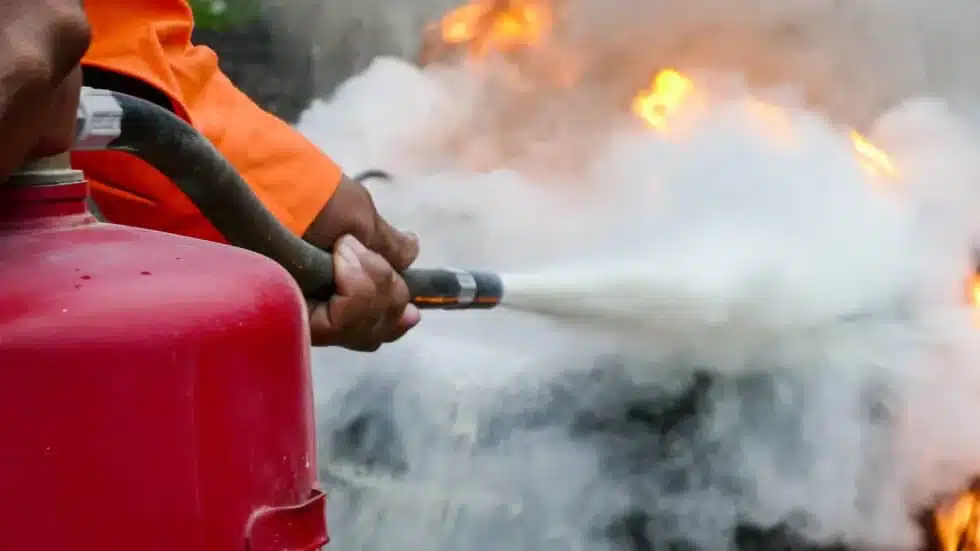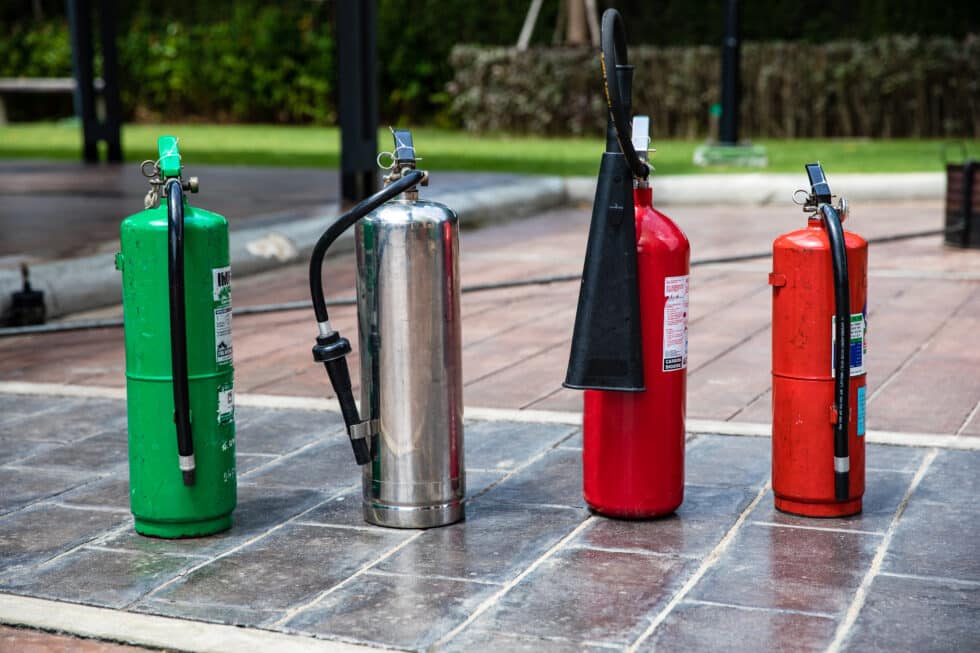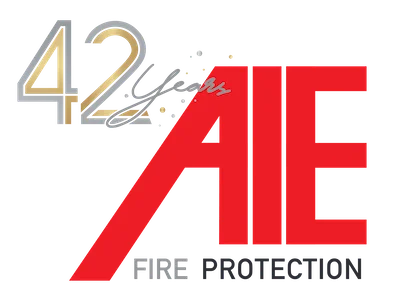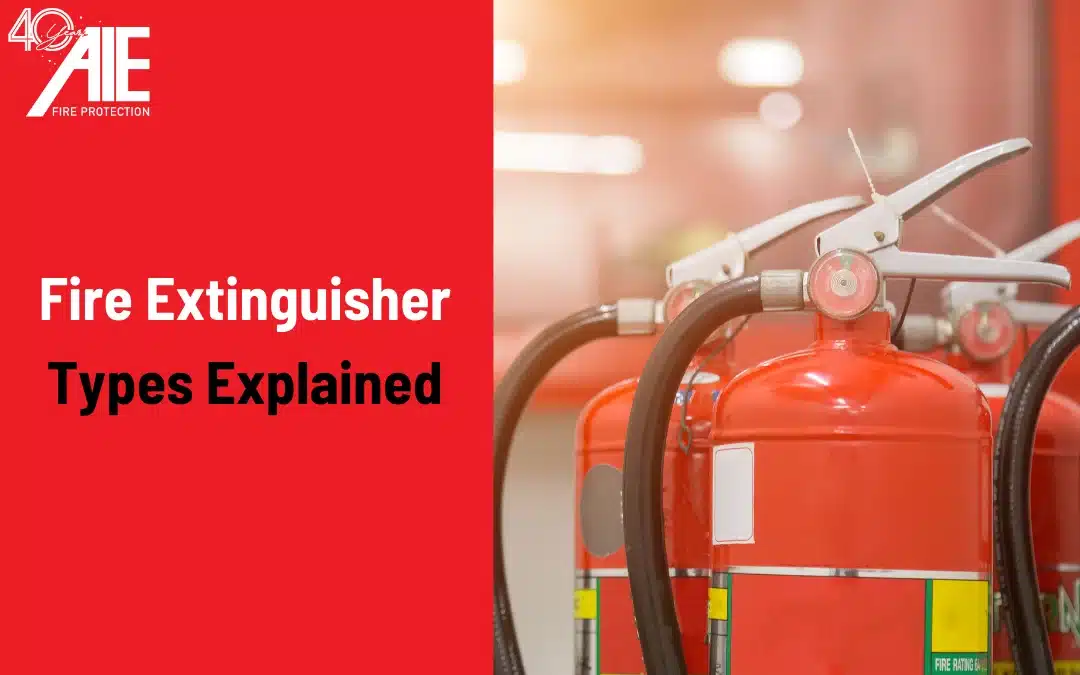When looking at the classes of fires, they’re determined by the fire risk that started the fire and the materials that feed it. These are the parameters as presented by the NFPA.
- Class A fires are fueled by combustible materials like wood, paper, cloth, plastic, and rubber.
- Class B fires involve more intense flammable and combustible liquids. This could include oil, oil-based paints, lacquer, alcohol, petroleum greases, and gasses.
- Class C fires are sparked by electrical equipment.
- Class D fires are caused by combustible metals. These could include lithium, potassium, sodium, zirconium, titanium, and magnesium.
- Class K fires are kitchen fires that occur in cooking appliances because of combustible materials like oil or fat.

Six Types of Fire Extinguishers
Depending on the type of fire present, the minute you hear a fire alarm go off, it’s time to spring into action. Here are the six types of fire extinguishers and when you should use each for different types of fires.
ABC Dry Powder Fire Extinguisher
This is the type of fire extinguisher that most people think of, with the red canister can expel a powder extinguisher over a fire. It’s a versatile fire extinguisher that uses a powder extinguishing agent to suffocate the fire. These are typically used to extinguish class A, B, and C fires.
Water Fire Extinguisher
Everyone knows water fights fires, so it’s no surprise that a water mist fire extinguisher works against a variety of fires, including class A, B, fires. Unlike older water extinguishers, newer models use a water mist that disperses over a large area. This fine mist suffocates and cools the fire by reducing the oxygen and heat within the space. The cooling effect of the water acts as a double whammy against the fire. Older water extinguishers are still used, though they can cause damage to a home.

Foam Fire Extinguishers
A foam fire extinguisher works similarly to other extinguishers, where it suffocates the fire of its fuel. A foam extinguisher is effective against flammable liquid fires, like class B fires, as well as class A fires, where there is paper, wood, or other combustible materials involved.
Wet Chemical Fire Extinguisher
Wet chemical extinguishers are effective against class A and K fires because of both its wet and cooling properties. The extinguishing agents are distributed in a fine spray texture, which limits fires without giving them fuel to spread.
Dry Chemical Fire Extinguisher
A dry chemical extinguisher uses dry chemicals like a sodium bicarbonate base or potassium bicarbonate base to cool and diffuse fires.
You may discover that some dry chemical fire extinguishers are labeled “BC,” whereas others are labeled “ABC.” What do these labels mean exactly? The “BC” and “ABC” labels refer to the types of fires that a fire extinguisher is able to put out. Dry chemical fire extinguishers with the “BC” label are designed to put out Class B fires and Class C fires. Dry chemical fire extinguishers with the “ABC” label, conversely, are designed to put out Class A fires, Class B fires and Class C fires.
CO2 Fire Extinguisher
Fires are fed by oxygen, and carbon dioxide (CO2) extinguishes oxygen. That means a CO2 extinguisher will suck the oxygen from the fire and, consequently, extinguish the fire’s force. These work well on class B fires, as well as class C electrical fires.

What Matters Most in Choosing a Fire Extinguisher
While the type of fire determines the best fire extinguisher to use, the most important factors in choosing the right fire extinguisher are whether or not the people present know how to operate it and whether it’s located in a place that is easily accessible. Without these two critical elements, a fire extinguisher isn’t going to work. Train your people and make sure they know where every fire extinguisher is located. Want help making your business fire safe, limiting fire hazards, and reducing your fire risk? Contact us today.
Information posted in our blog is merely for educational and informational purposes. While the information has been verified to the best of our abilities, we cannot guarantee its total accuracy, and it should not be considered legally binding advice. This blog is not intended as a substitute for professional advice, and should you decide to act upon the information, you do so at your own risk.


Recent Comments